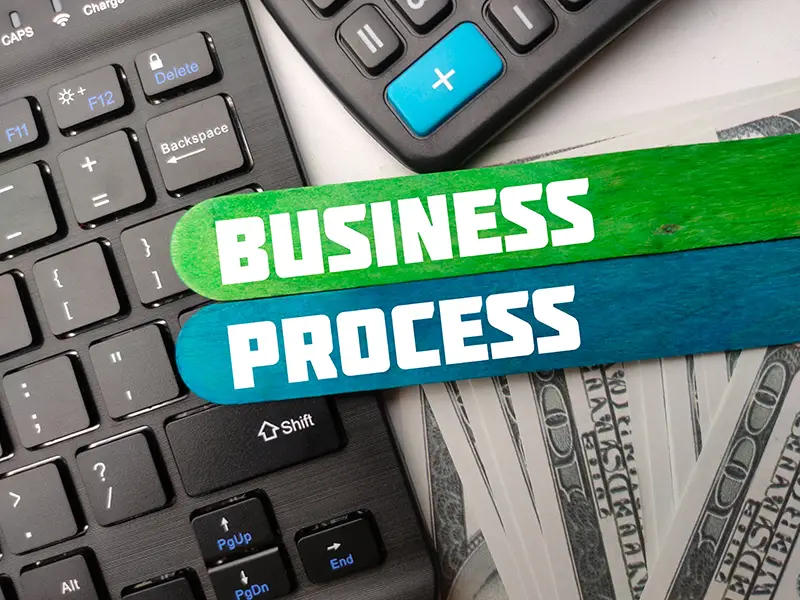Click here to get this post in PDF
Owning or managing a growing business can be a challenge. As your business expands, the existing processes may no longer be sufficient to keep up with the increasing operational demands. This means you’re always looking for ways to streamline your operations and increase efficiency. Hence, it would help if you had a solution that could automate and manage the processes effectively.
One of the best ways you can achieve this is by using business process modeling. By using business process management software (BPMS), you can create visual representations of your processes and identify obstacles and inefficiencies. Doing so can help you make relevant improvements to increase productivity while reducing costs.
With the right BPMS, you can easily design, simulate, and implement process changes. You can also monitor and measure their impact on your business in real-time. So, to achieve this, consider the guidelines below for choosing a BPMS for your business.
1. Identify Your Needs And Goals
Identifying your business’s needs and goals is your first step in choosing a BPMS. You can do this by looking closely at your current operations and the challenges you face versus what you want to achieve. For example, you might be struggling with time-consuming processes. Alternatively, you may be having difficulties tracking and measuring process performances. You might also be looking for ways to increase efficiency while keeping operational costs low.
Once you understand your needs and goals clearly, you can evaluate the different BPMS options to see which one can meet those needs. Besides, your goals can be your checklist to help you find a BPMS that can help you achieve your desired outcomes.
2. Look At Its Integration
Integration in a BPMS is vital as it allows you to connect seamlessly with other systems. You may have other software like enterprise management system (ERP) or customer relationship management (CRM) software. In this case, it’s vital to consider the BPMS’s ability to integrate with the systems you already use.
Integration capabilities mean you can streamline your processes and avoid duplication of effort. Moreover, the data is shared between systems in real-time, which allows you to make better decisions based on accurate and up-to-date information. Besides, integration capabilities let you optimise your business processes, improving efficiency and productivity.
3. Evaluate Its Scalability And Customisation
While you want a BPMS that can serve your current needs, you also expect it to adapt to future changes you may encounter. Therefore, considering a software’s scalability and customisation would be best. The scalability of the BPMS allows you to add users, processes, and features as your business grows. Scalability also helps you avoid the need to replace the entire system.
The business environment can change, and the organisation can undergo policy or workflow changes. Therefore, it’s best to have the software you can configure to fit specific processes, workflows, and business rules rather than changing the process to provide the software.
Overall, the scalability and customisation of a BPMS are vital as they can accommodate your organisation’s growth and change. Such a feature means it can continue meeting your business needs, thus helping you meet your desired goals.
4. Check Its Security Features
When choosing a BPMS, security should play a crucial role. Your business handles sensitive information. The BPMS will process personal data and financial and confidential business information. Hence, it would be best for the software to have robust security features to protect this information.
When evaluating software, you can look at features such as role-based access control, data encryption, and multi-factor information. In addition, check if the software meets industry compliance regulations and standards. You can also look for a software vendor with a dedicated security team that regularly conducts security audits and penetration testing. All these factors ensure you select a BPMS that can protect your data from potential data breaches and data loss.
5. Assess Customer Support
Customer support and other professional services are crucial when selecting any product. A BPMS is no exception. You want to choose a vendor that offers robust support and assistance to help get the most out of your software. The vendor can have support avenues like phone and email support, online documentation, and training resources. In addition, it’s essential to look at the vendor’s availability, so you can easily reach out to them whenever you need assistance.
Besides customer support, professional services like implementation, customisation, and optimisation are also vital. A vendor offering such services can help you quickly and easily adopt the software. These services can save you time and money you would have otherwise spent configuring the software to meet your specific needs.
Conclusion
In today’s fast-paced business environment, it’s important to have the right tools to stay competitive. This is where IT companies come in. As providers of innovative technology solutions, they offer a wide range of BPMS capabilities designed to meet the unique needs of businesses across all industries.
Their BPMS options are now not only convenient to use, but additionally exceedingly customisable, permitting firms to without problems adapt workflows to their precise needs. An IT company with a lot of trips will additionally have true client service, so agencies can quickly unravel any troubles and get the most out of their software. In addition, the IT company excels in cost efficiency. Their BPMS solutions are competitively priced, making them an affordable option for businesses of all sizes. By partnering with a reputable company like Andersen, firms can reduce operational costs while improving overall efficiency.
In conclusion, any business looking to streamline operations, increase efficiency and improve overall performance must choose the right business process management software. With new and reliable BPMS solutions from IT companies, businesses can achieve their goals and stay ahead of the competition.
You may also like: Keeping Your Digital Data Organized With Digital Media Management Software
We earn a small commission if you shop through the link below
Image source: elements.envato.com


